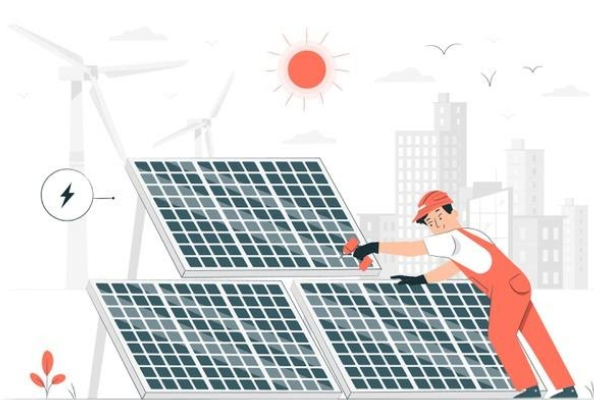In the grand tapestry of urban landscapes, your office building stands tall, a beacon of innovation and sustainability. As you look towards the future, the decision to harness the power of the sun becomes a pivotal choice in shaping not only the destiny of your structure but also the environmental legacy you leave behind. Embrace the solar revolution, and let’s navigate the cosmos of solar energy providers together.

The Quest for the Right Solar Company
You find yourself at the crossroads of progress, contemplating how to turn your architectural marvel into an eco-friendly haven. The daunting question echoes: How do you choose the best solar company to illuminate your iconic edifice?
The Personal Touch of Solar Power
Let’s embark on this journey with a tale that echoes the essence of choosing a company for solar panel installation for home. Each office is different, and has different needs for solar power. As such, it needs a customized solar power solution that meets its needs.
Here are the factors you should consider.
1. Assessing Energy Consumption: Before diving into solar installation, it’s essential to conduct a thorough assessment of the office’s energy consumption. Analyze utility bills and gather data on daily and seasonal variations in energy demand. This information serves as the foundation for determining the appropriate solar panel capacity required to meet the office’s power needs.
2. Solar Potential of the Location: Understanding the solar potential of your office location is paramount. Factors such as sunlight hours, shading from nearby structures or trees, and local weather conditions can impact the efficiency of solar panels. Conduct a solar site analysis to identify the best areas for solar panel installation, ensuring they receive maximum sunlight exposure throughout the day and across seasons.
3. Regulatory Compliance and Building Codes: Navigating local regulations and building codes is a critical step in the solar installation process. Different regions may have specific requirements and restrictions governing solar panel installations. It’s crucial to obtain the necessary permits and ensure compliance with local building codes to avoid legal complications and potential setbacks during or after installation.
4. Determining Solar Panel Capacity: Calculating the appropriate solar panel capacity involves a combination of factors, including energy consumption, panel efficiency, and seasonal variations. Consider the type of solar panels that best suit your needs, whether monocrystalline, polycrystalline, or thin-film. Each type has its advantages and disadvantages, impacting factors such as efficiency, space requirements, and overall cost.
5. Structural Integrity and Orientation of the Roof: Assessing the structural integrity of the roof is essential to ensure it can support the weight of the solar panels. Additionally, the orientation of the roof plays a crucial role in maximizing sunlight exposure. South-facing roofs typically receive the most sunlight, but east and west orientations can also be viable, depending on the specific circumstances of the office building.
6. Budgeting and Financing: Estimating the overall cost of solar panel installation is a multifaceted process. Consider not only the cost of the panels but also installation, inverters, mounting systems, and potential additional expenses such as roof repairs or upgrades. Explore available incentives, rebates, and tax credits to help offset costs. Investigate financing options, including solar loans or power purchase agreements (PPAs), to make the transition to solar more financially feasible.
7. Selecting a Professional Installer: Choosing a reputable and experienced solar installation company is crucial for the success of your solar project. Research potential installers, obtain multiple quotes, and consider factors such as the company’s track record, certifications, and customer reviews. A qualified installer will guide you through the process, ensuring the system is installed correctly and efficiently.
8. Installation Process: Once you’ve selected a professional installer, the installation process begins. This involves preparing the roof, securing necessary permits, mounting the solar panels, and connecting them to the electrical system. A well-executed installation is key to the long-term success and efficiency of your solar power system.
9. Monitoring and Maintenance: Installing solar panels is not a set-and-forget process; it requires ongoing monitoring and maintenance. Implement a monitoring system to track energy production and system efficiency. Regular maintenance, such as cleaning panels and inspecting for any issues, ensures the longevity and optimal performance of your solar power system.
10. Promoting Sustainable Practices: Beyond the physical installation of solar panels, consider ways to promote sustainability within the office. Encourage energy-efficient practices among employees, such as turning off lights and electronics when not in use. Educate staff on the environmental and financial benefits of solar energy, fostering a culture of sustainability within the workplace.
Conclusion
Installing solar panels in your office is a strategic and impactful decision that goes beyond mere energy production. It represents a commitment to sustainability, cost savings, and a greener future. By carefully considering factors such as energy consumption, solar potential, regulatory compliance, and professional installation, you can harness the power of the sun to create a more environmentally friendly and economically sound workplace.
